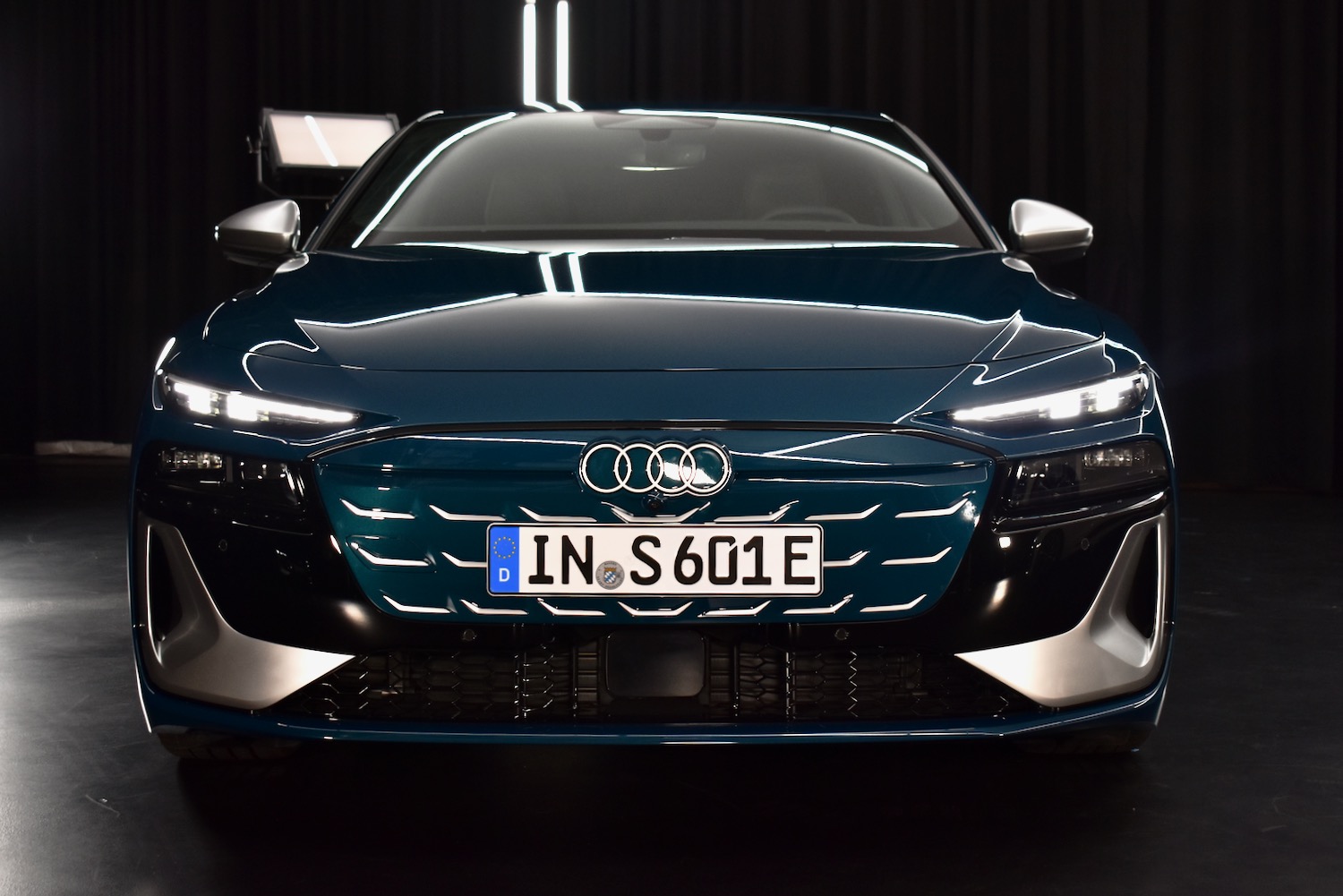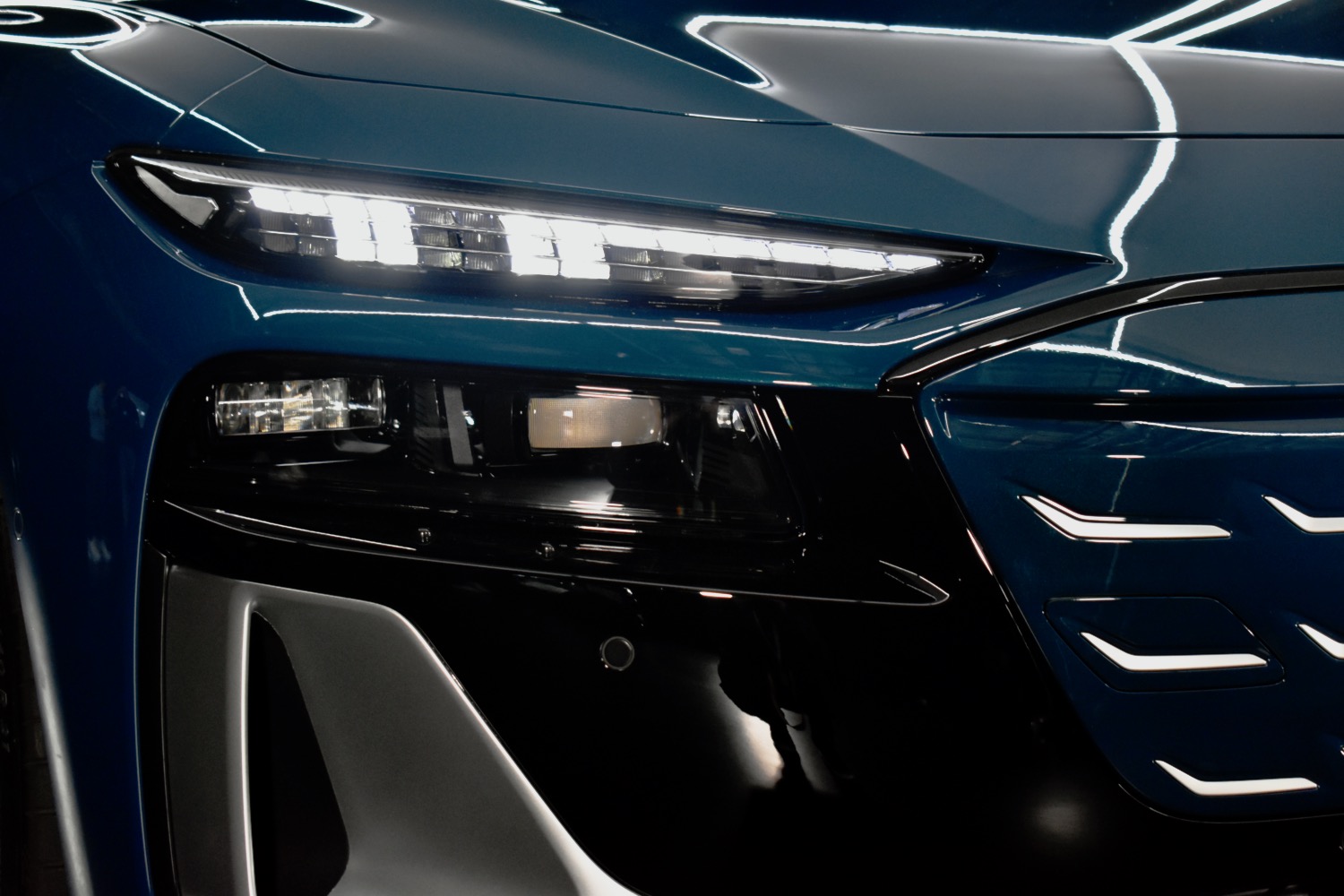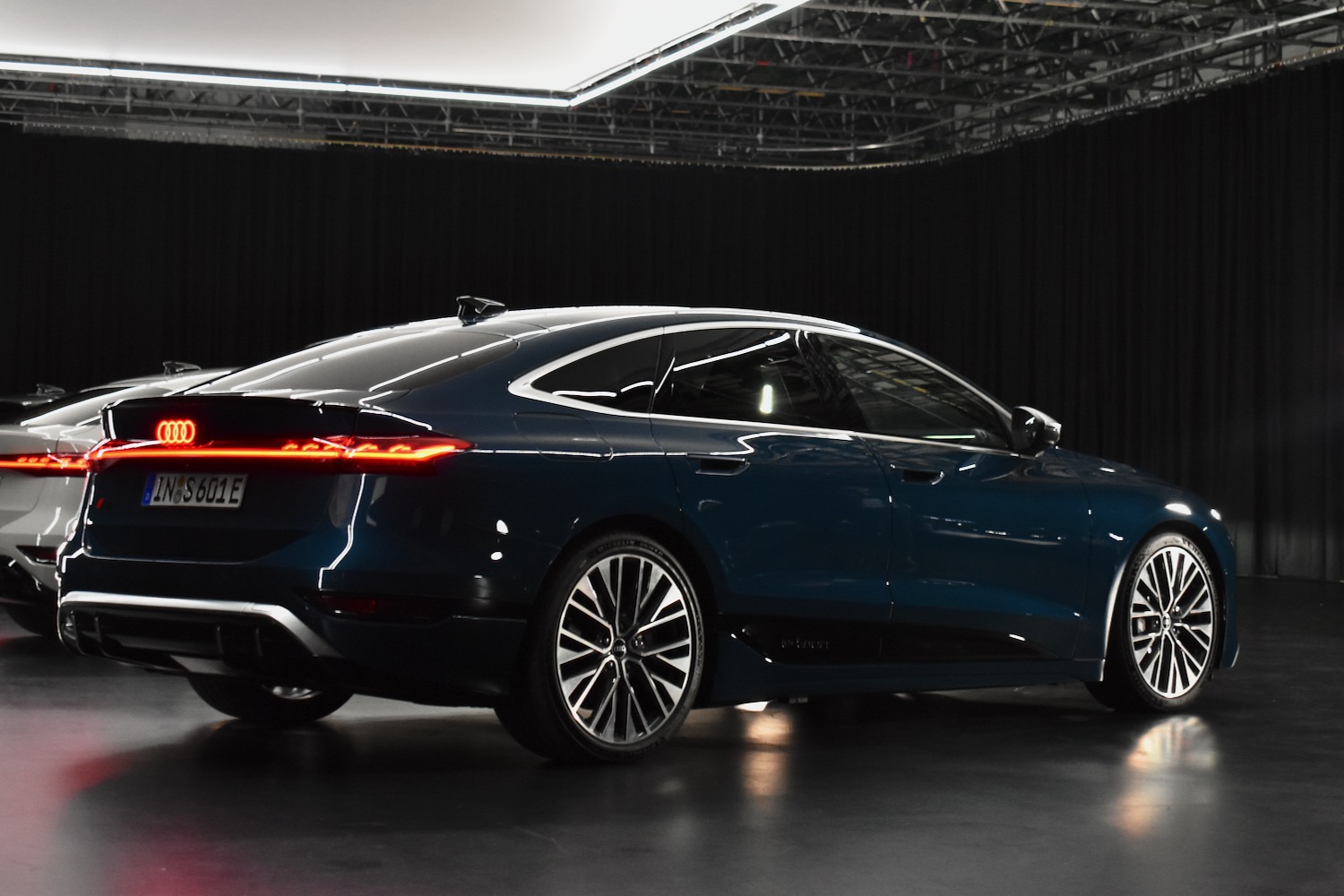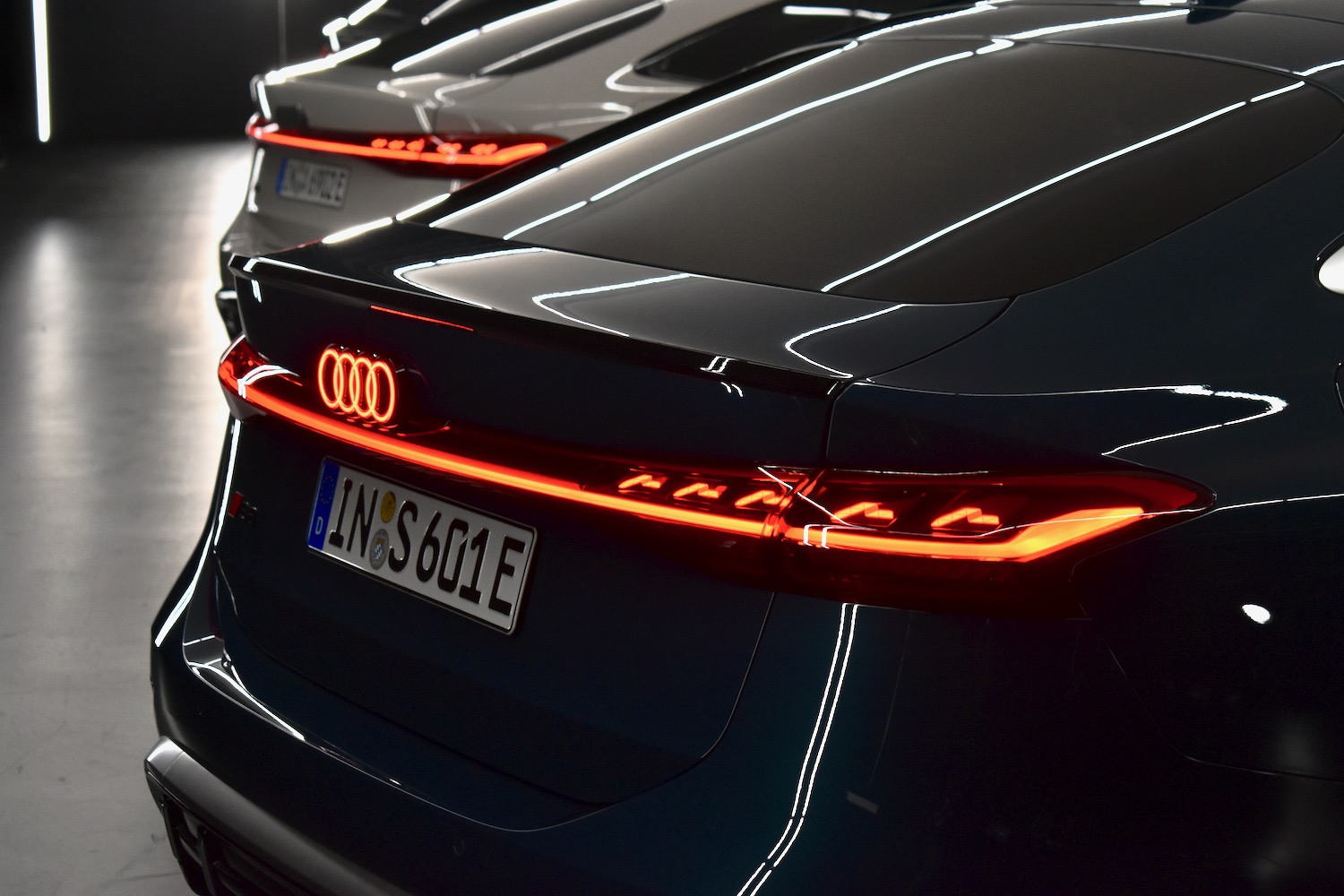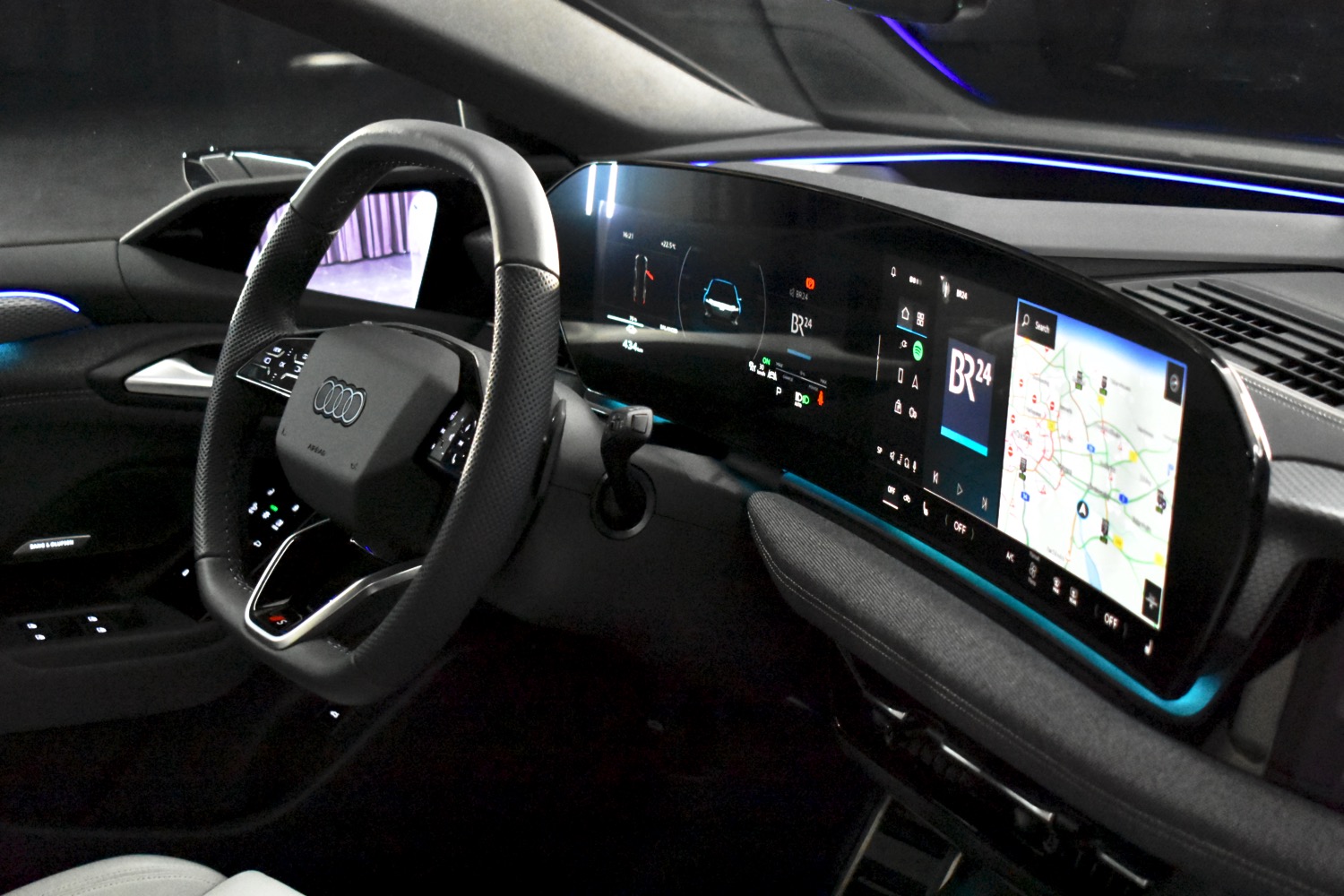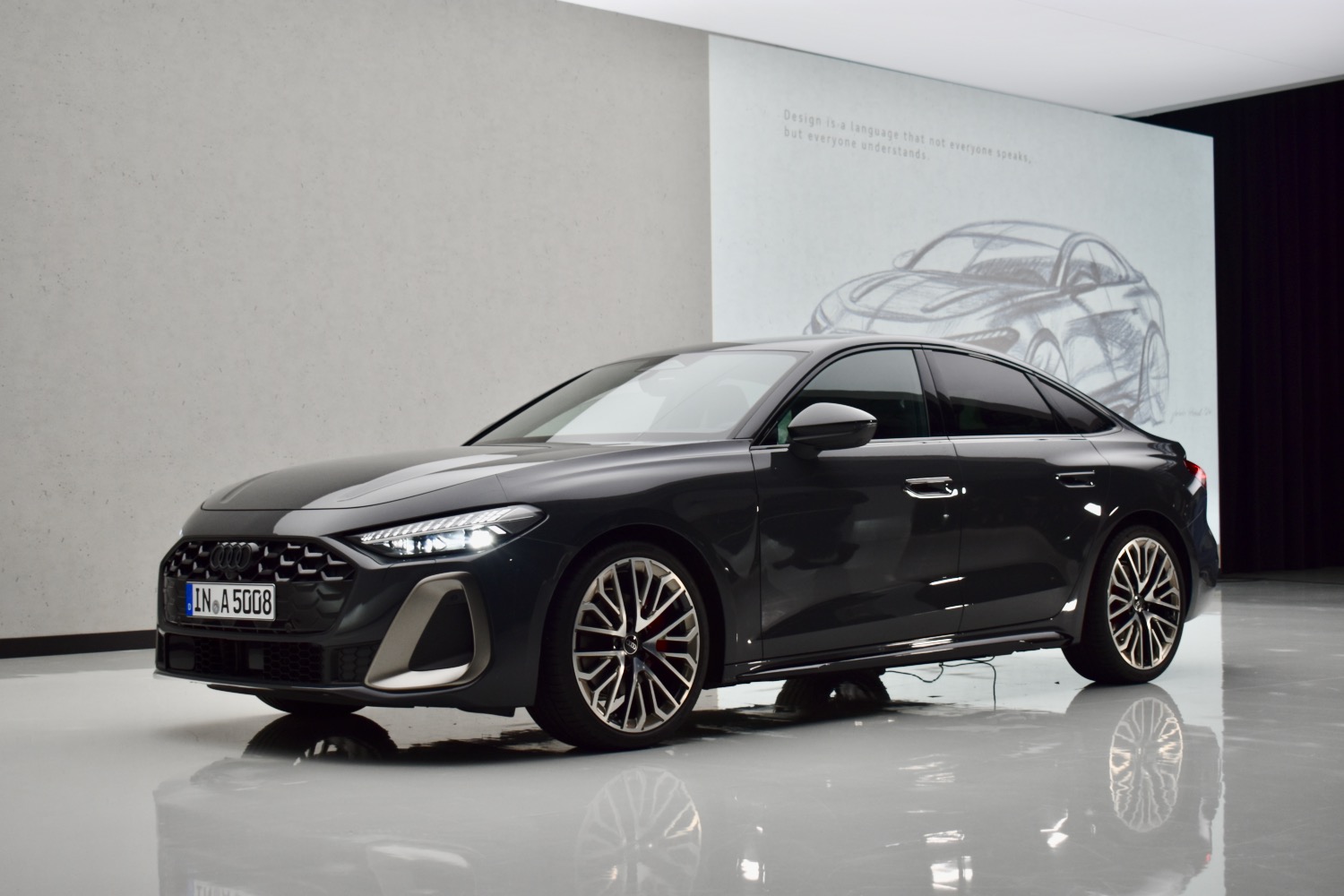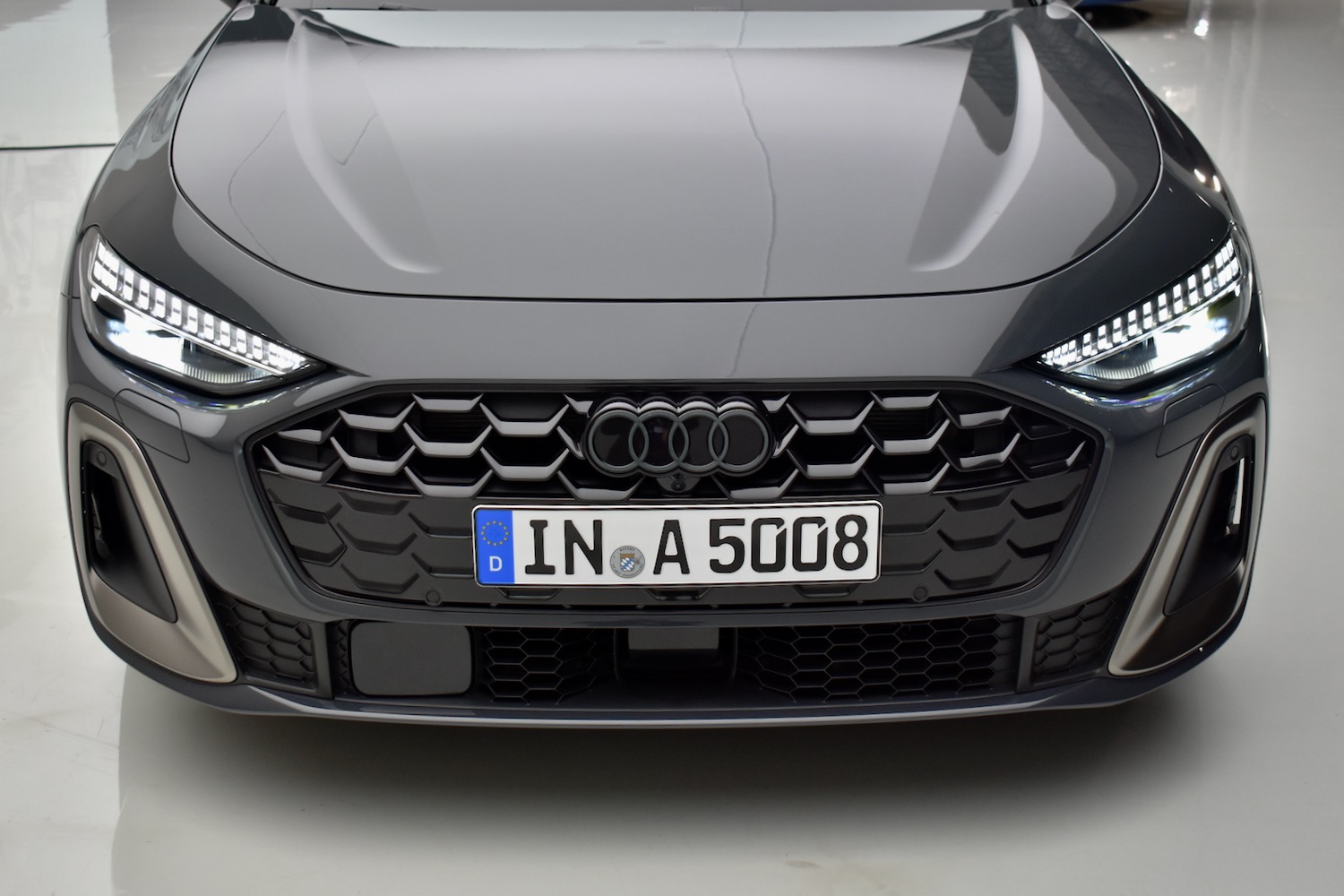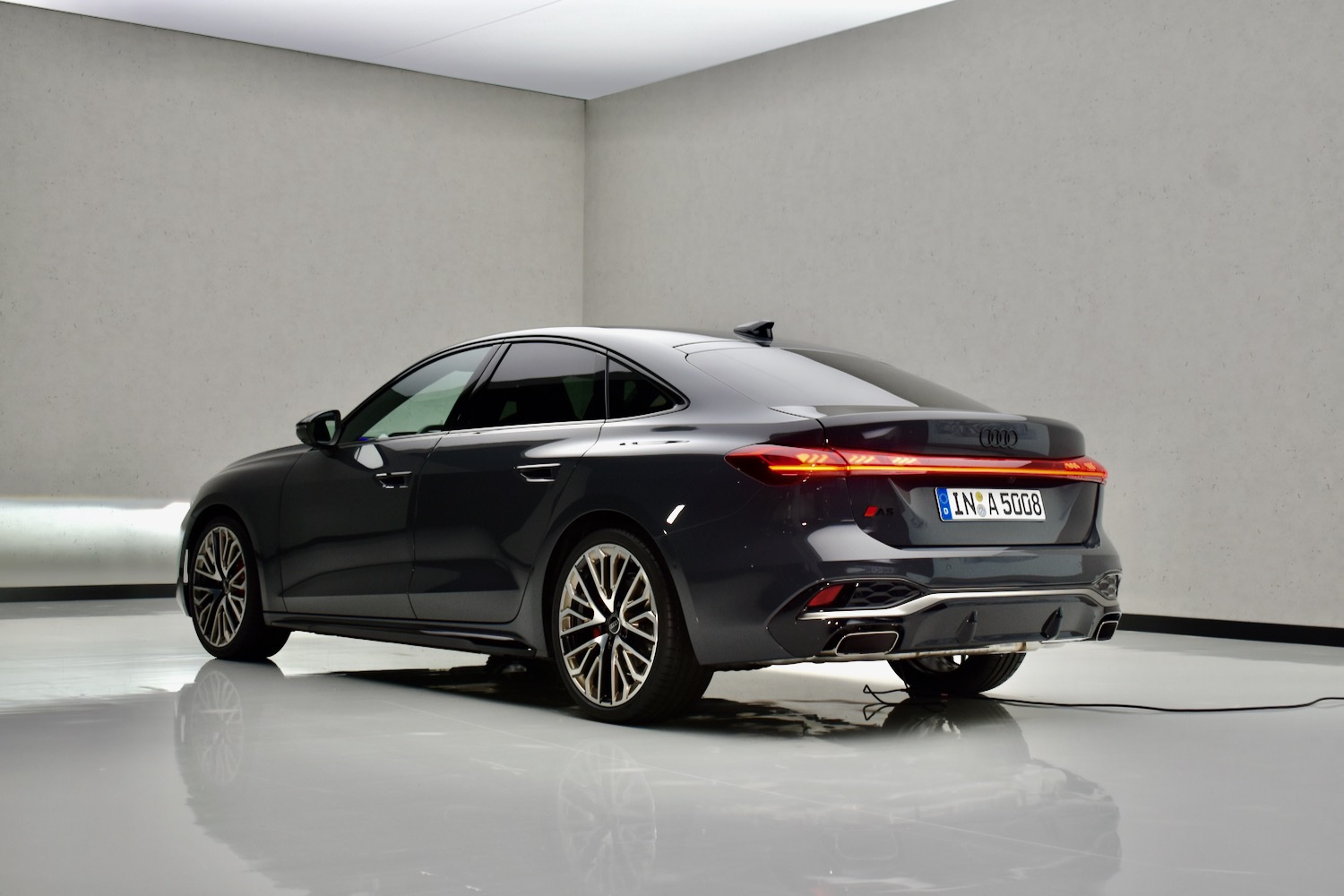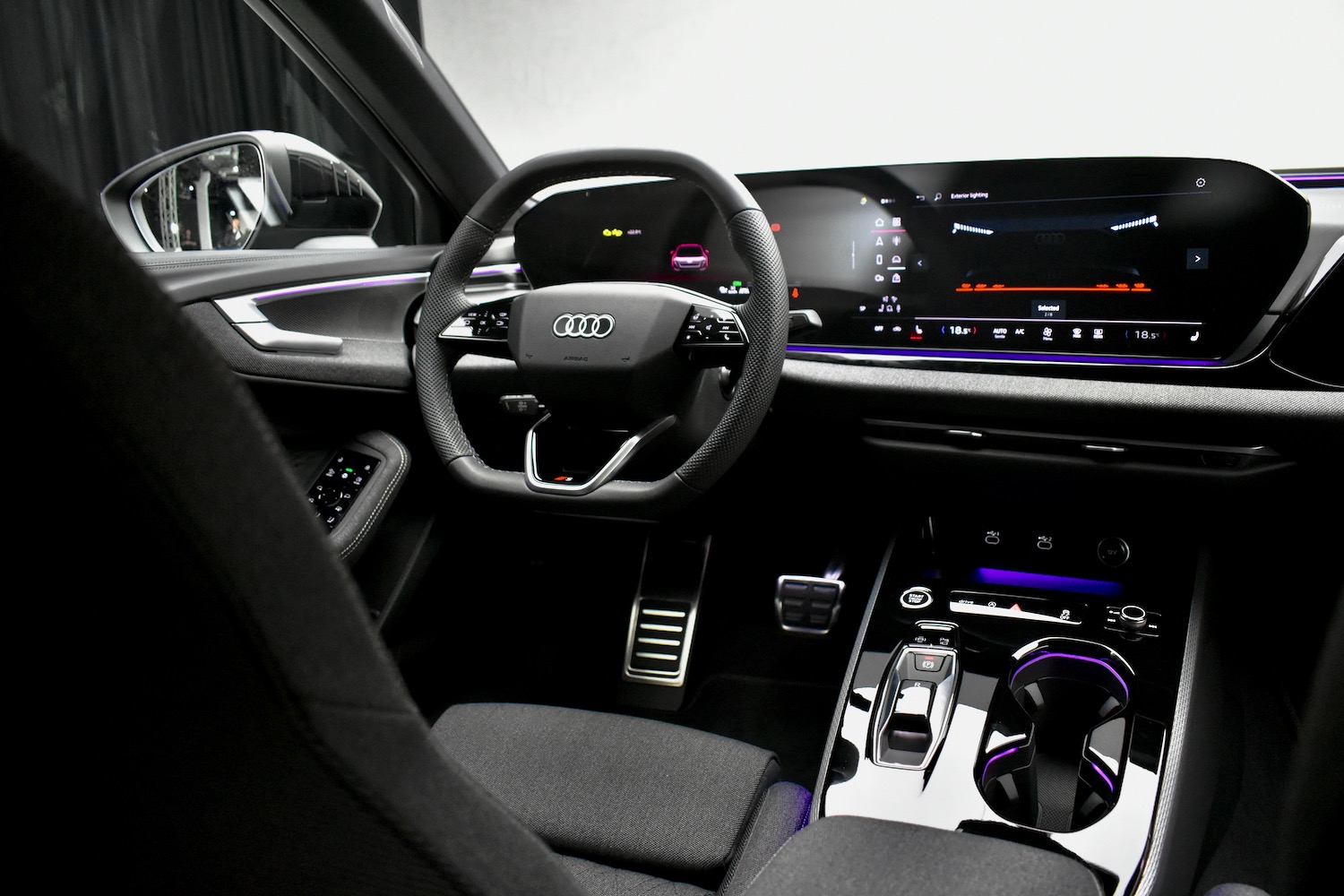Electric cars are here to stay, but they’ll be sharing garage space with internal-combustion vehicles for the time being. That leaves automotive designers and product planners with a decision: Should new cars advertise their powertrains, with different designs for EVs and gasoline models? Or is consistent branding more important?
The Audi brand name holds prestige no matter what kind of car the automaker’s four-ring logo is attached to. The German automaker does expect to stop making combustion cars eventually, but like many established automakers, it doesn’t expect the road to that point to be a straight line. So Audi is revamping its gasoline cars while continuing to expand its EV lineup — with largely common styling features between them.
In a repurposed industrial facility just outside Munich, Audi recently gave Digital Trends and other media a sneak peek at two crucial new models. The 2025 Audi A6 e-tron is an all-electric replacement for one of Audi’s longest-running combustion models, while the 2025 Audi A5 marks a fresh investment in internal-combustion vehicles.
All-EV, eventually
“The target portfolio of Audi’s future will be an all-electric portfolio,” Audi CEO Gernot Döllner told Digital Trends and other media during a Q&A. Döllner said earlier this year that Audi would introduce its last combustion model in 2026, but indicated the automaker isn’t locked into that long-term goal.
“Nobody knows how fast the electric transition will happen,” Döllner said, which is why combustion models are still part of the plan for now. Audi will determine its pace based on customer demand and changes to regulations.
Audi doesn’t expect the road to electrification to be a straight line.
If tougher European regulations remain in place (they’re due for reevaluation in 2026), Audi could stop selling combustion cars there by 2033. The United States has put a new round of emissions rules into place for model years 2027 to 2032, but they still allow for combustion models.
Audi’s medium-term solution is a zipper lineup, with even-numbered models powered by combustion engines, odd-numbered models powered by batteries, and hybrid versions of some nameplates added in as well. Hence the 2025 Audi A5 is actually a replacement for the Audi A4 sedan, as well as the current A5 coupe/convertible/hatchback. The A6 e-tron will become the sole A6 variant once a new Audi A7 arrives to replace the current combustion version of that sedan.
Similar styling for EVs and combustion models
This new naming scheme seems a bit confusing, even compared to the approaches of Audi’s main rivals. Mercedes-Benz has its EQ sub-brand, with doppelgängers of its traditional gasoline luxury cars defined by polarizing styling and oversized screens. BMW has waffled between building dedicated EVs like the iX SUV and making electric variants of its combustion models like the i5, an all-electric version of the 5 Series sedan that has traditionally been one of the A6’s main competitors.
Audi seems to want to highlight which of its cars are electric without making too big of a deal out of it. That’s also the case with the A6 e-tron’s styling. Unlike the i5, it’s not just a combustion sedan refitted with an electric powertrain. But it blends in more than the pebble-shaped Mercedes-Benz EQE sedan, its closest rival in the EQ lineup.
Moving between rooms where the cars sat under studio lights, we saw a strong family resemblance between the A6 e-tron and the new A5. That’s what Audi was going for.
The difference between the gasoline A5 and electric A6 e-tron is mainly in the details.
“In general, the design language should be independent [of whether] it’s a combustion-engine or battery-electric [vehicle],” Döllner said.
The difference is mainly in the details. The A6 e-tron and other Audi EVs have a contrasting grille (to highlight that it’s a nonfunctional decorative element) and a piece of trim along the doors to represent the battery pack. The A5 hints at its combustion engine with a hood bulge and prominent exhaust tips. Both the A5 and A6 e-tron will be sold in the U.S. exclusively as sedans with rear hatches instead of conventional trunks; other markets get handsome Avant wagon body styles as well.
Shared tech, different platforms

Audi also won’t limit the latest infotainment tech to its EVs. The A5 gets the same E3 1.2 electrical architecture as the A6 e-tron. This architecture, which debuted in the Q6 e-tron electric SUV, comes with a three-screen display setup that includes an 11.9-inch digital instrument cluster, 14.5-inch touchscreen, and 10.9-inch front-passenger screen that’s common to both the combustion A5 and electric A6 e-tron.
The similar exterior styling themes and interior tech features bely the fact that these two cars are based on different underpinnings. The A6 e-tron is built off the same Premium Platform Electric (PPE) as the Q6 e-tron and the electric version of the Porsche Macan. It uses a “low floor concept” version of the PPE with rearranged suspension and other components that allows this sedan to sit lower than the Q6 e-tron SUV. The A5 debuts the Premium Platform Combustion (PPC) that will serve as the basis of most future Audi combustion models, but has nothing in common with the PPE architecture.
Audi also won’t limit the latest infotainment tech to its EVs.
In the U.S., the A6 e-tron will be offered in single-motor rear-wheel drive and dual-motor all-wheel drive guises making 362 hp and 422, respectively. A sportier S6 e-tron dual-motor model bumps output to 496 hp, or 543 hp with its launch control system engaged. That system will also scoot the S6 from zero to 60 mph in 3.7 seconds with minimal drama. The A5 will be sold in the U.S. with a 2.0-liter turbocharged four-cylinder engine and all-wheel drive; an S5 performance variant will also be available with a 3.0-liter turbocharged V6.
All A6 e-tron models have a 100-kilowatt-hour battery pack with 94kWh of usable capacity. Audi hasn’t released range figures for the U.S., but said all A6 e-tron models will be able to DC fast charge at up to 270 kilowatts, completing a 10%-80% charge in 21 minutes. However, the U.S.-spec version misses out on some tech features available in Europe, including camera side mirrors and the ability to program animated lighting signatures.
A cautious approach

Legacy automakers have built businesses on selling cars powered by fossil fuels, otherwise it wouldn’t have taken a startup like Tesla to evangelize EVs. But EVs have since rekindled interest in cars among non-enthusiasts. Automakers are also under more regulatory pressure than ever to lower emissions, and more shareholder pressure to pursue EVs in the hope of duplicating Tesla’s stock price.
The shareholders are quickly finding that making more EVs doesn’t automatically make the share price go up, and cost and infrastructure concerns are still causing car shoppers to hold back, which means combustion models will likely be with us for a little while longer. In that context, Audi’s approach of using design to keep its own brand in the foreground to create a blended family of gasoline and electric models is cautious, but sensible.

